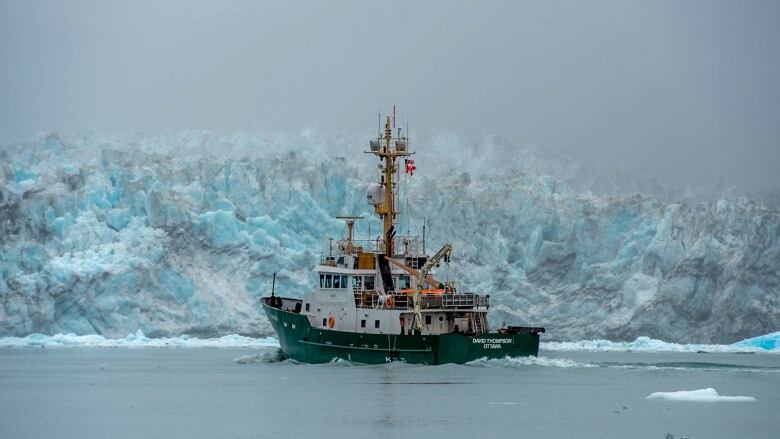Archeologists dive back into Franklin mystery
Research goals for 2019 include excavating officers cabins on HMS Erebus, 3D mapping of HMS Terror

A Parks Canada research team is en route to the underwater wrecks of Sir John Franklin's ships in an effort to uncover more truths of what happened on the infamous and ill-fated expedition to find the Northwest Passage.
This year's archeological exploration plan of HMS Erebus and HMS Terror that were lost for nearly 170 years is being called the "largest, most complex underwater archeological undertaking in Canadian history" by government officials in a public announcement Friday.
"The Government of Canada is proud every Franklin artifact is jointly-owned with Inuit and each new discovery helps the world further unravel the story of the Franklin Expedition," Parks Canada Minister Catherine McKenna stated in a press release.

Research goals for 2019 include excavation of officer's cabins and the lower deck of HMS Erebus, where Franklin had his cabin. Archeological activities atthe more-recently-discovered and better-preserved HMS Terror are set to focus on 3D structural mapping and an exploration of the interior with an HD camera mounted to a remotely operated vehicle.
Last summer's poor ice conditions thwarted an ambitious six-weekresearch plan into just two days of diving on HMS Erebus, and prevented any diving at HMS Terror. This prompted concerns about the deteriorating condition of HMS Erebus, which is in relatively shallow water and being impacted by storm swells.
Solving the mysteries of the Franklin Expedition

The Franklin Expedition disappeared into what is now the Canadian Arctic after setting sail from England in 1845 in search of the Northwest Passage. The disappearance of Franklin, his crew of 128 men and ships was one of the most compelling mysteries in the history of exploration and set off one of the most extensive and well-publicized rescue operations undertaken.
More than 30 expeditions searched for clues in the two decades after Franklin's disappearance, resulting in extensive mapping of the region andcompleting the route throughthe Northwest Passage.
Ultimately, it was collaborating with local Inuit that led Canadian research vessels to discover the shipwrecks in much more recent history.Inuit Qauijimajatuqangit oral history told of one ship trapped in ice and sinking near King William Island, while another drifted south.

In 2014, HMS Erebus was discovered along the eastern edge of the Queen Maud Gulf, south of King William Island.
The search for HMS Terror continued until 2016, when Sammy Kogvik of Gjoa Haven told a story he had been keeping secret to his boss while aboard an Arctic Research Foundation vessel searching for the wreck he had seen a strange piece of wood that looked like a ship's mast poking through the ice while snowmobiling years before.
This led to the rediscovery of HMS Terror, which had been hiding in the aptly-named Terror Bay off the southwestern shore of King William Island, roughly 100 km due north of the wreck of HMS Erebus.
"The contributions of Inuit were essential in the search and discovery for the wrecks of HMS Erebus and HMS Terror. The support, guidance, advice and knowledge shared so generously by Inuit in the discovery of the Franklin wrecks continues to be invaluable in the on-going investigation of HMS Erebus and HMS Terror and the management of the national historic site," stated McKenna.
A community event was held in Cambridge Bay, NU, to showcase Parks Canada's newest research vessel, the RV David Thompson, prior to the archaeological team's departure toward the wreckage of HMS Terror. A similar event is planned in Gjoa Haven before the team heads to the underwater grave of HMS Erebus.












_(720p).jpg)


 OFFICIAL HD MUSIC VIDEO.jpg)
.jpg)



























































































